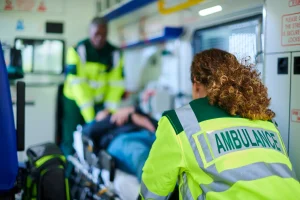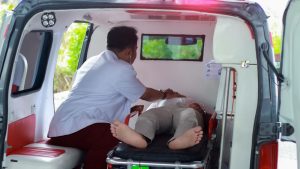Ever wondered what would really happen if suddenly you faced a Gili Islands emergency while relaxing on those postcard-perfect beaches? I used to think, “The Gilis are tiny and peaceful—what could possibly go wrong?” But after witnessing a traveler panic over a small snorkeling injury, I realized how important it is to understand how Gili emergency, access to Gili emergency service, and the availability of any Gili emergency clinic truly work on these car-free islands.
And honestly, if you love traveling like I do, this kind of information isn’t meant to scare you—it actually gives you peace of mind. You’ll know exactly what to do if the unexpected happens.
Understanding How Emergencies Work on the Gili Islands
The first time I set foot on Gili Trawangan years ago, it felt like stepping into another world: relaxed energy, soft ocean sounds, and the faint salty breeze. But behind that dreamy vibe lies an important reality: if a Gili Islands emergency happens, everything must function without motorized vehicles. No cars, no fast ambulances—only bicycles, horse carts (cidomo), and boats.
This means that emergency response depends heavily on local coordination. A small island doesn’t automatically mean small risks. In fact, because infrastructure is limited, travelers must be even more prepared. This is also why the presence of any Gili emergency clinic becomes incredibly important.
(Seriously, I once saw a tourist who hit coral and had to be transported by cidomo—it looked painful.)
Why Preparation Matters More in a Gili Islands Emergency
There’s a positive presupposition I always share with friends: you want to travel safely and comfortably, right? And the moment you accept that, staying aware becomes natural.
If a Gili Islands emergency occurs, several factors make the response more challenging:
-
Limited transportation → getting to a clinic may take longer.
-
Rapid weather changes → especially if evacuation by boat is needed.
-
Limited medical equipment → some conditions require treatment in Lombok or Bali.
Imagine snorkeling, with water as clear as glass, and you accidentally step on a sea urchin. Sharp pain instantly shoots through your foot. I’ve experienced it myself; it felt like being poked with salty needles. Thankfully, the Gili emergency service responded quickly.
Where to Go: Knowing the Right Gili Emergency Clinic
Gili Trawangan, Gili Air, and Gili Meno all have medical facilities, but not all of them are fully equipped. If you face a Gili Islands emergency, here are your options:
1. Local clinics on each island
For minor injuries, mild infections, fever, or allergies, local clinics are usually enough. Staff are used to handling common cases like:
-
coral cuts
-
dehydration
-
ear infections after diving
-
jellyfish stings
-
mild heatstroke
Local clinics also offer basic Gili emergency services such as antiseptics, bandages, IV drips, and common medications.
2. Larger Gili emergency clinic on Gili Trawangan
This island is the busiest, so naturally its emergency facilities are the most complete. If the situation is a bit more serious—such as a minor fracture or a severe allergic reaction—this is where you’ll likely be taken.
I once accompanied a friend who experienced severe vertigo after freediving. As soon as we arrived, the nurse spoke calmly, moved efficiently, and—strangely—the smell of antiseptic felt comforting. Within 20 minutes, everything was under control. That’s the value of knowing the right Gili emergency service.
3. Evacuation to Lombok or Bali
For major conditions such as:
-
heart attacks
-
serious accidents
-
major fractures
-
head trauma
-
complications of chronic illness
You will be referred via fast boat to Lombok, or even evacuated to Bali. In a serious Gili Islands emergency, every minute counts.
What To Do Immediately in a Gili Islands Emergency
We can’t predict when bad things happen… but we can take steps to minimize the damage. When facing a Gili Islands emergency, the steps below help your mind shift from panic into clarity—an NLP-style “lead your body into calm” trick:
1. Take a slow breath
It sounds cliché, but when panic hits, your breath feels broken, like you’re being dragged by a wave. Slowing it down activates clarity.
2. Contact Gili emergency service
Local operators are experienced in helping tourists, so don’t hesitate to ask questions. Hotels, dive centers, and larger restaurants usually have emergency numbers ready.
3. Ask locals for help
Gili residents are incredibly helpful. They are used to assisting tourists in distress. Sometimes they’ll take you straight to a Gili emergency clinic without hesitation.
4. Remove yourself from additional danger
For example:
-
Coral cuts → don’t keep swimming.
-
Heatstroke → find shade immediately.
-
Bike accidents → move off the path to avoid cidomo collisions.
5. Do not delay treatment
This is often overlooked. A small problem can quickly turn serious if ignored.
Common Scenarios That Lead to a Gili Islands Emergency
1. Snorkeling & diving injuries
Some spots have strong currents, and coral is pretty much underwater sandpaper. Fins get stuck, feet get scraped, or ears suffer after diving.
2. Heat exhaustion & dehydration
Gili can get extremely hot during the afternoon. I once saw a tourist collapse from dehydration. Luckily, the nearest Gili emergency clinic provided an IV drip.
3. Food or alcohol issues
Sometimes spicy food or local alcohol triggers stomach issues or mild food poisoning. Not life-threatening, but certainly stressful.
4. Bike accidents
Remember, bikes replace cars here. Sandy paths can cause wheels to slip, especially after rain.
5. Marine stings
Jellyfish, sea urchins, fire coral—many travelers underestimate them, but they can be surprisingly painful.
All of these situations show that being ready for a Gili Islands emergency isn’t paranoia—it’s smart preparation.
How to Stay Safe and Avoid a Gili Islands Emergency
-
Use a bike with working lights at night.
-
Carry a small first-aid kit—antiseptic ointment, bandages, saline solution.
-
Wear protective footwear on rocky beaches.
-
Stay hydrated.
-
Follow dive master instructions closely.
-
Save the number of the nearest Gili emergency service on your phone.
One more essential tip: get travel insurance. Many emergency evacuations from Gili to Bali cost a lot of money. You don’t want to regret skipping it.
The Peace of Mind That Comes With Being Prepared
Traveling to the Gili Islands is still magical. But because of that beauty, you want to enjoy it without anxiety. With a little preparation, you’ll feel more grounded—more calm and confident knowing that if a Gili Islands emergency happens, you already know the steps to take.
I always say: the best trip is the one you enjoy safely. By understanding Gili emergency options, knowing where to find Gili emergency service, and not panicking when you need a Gili emergency clinic, you’re already ahead of most travelers.
And in the end, you’ll return home with beautiful stories—not stressful ones.












